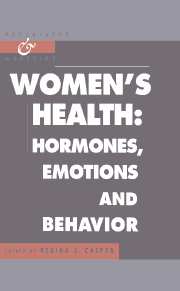
- Cited by 2
-
Cited byCrossref Citations
This Book has been cited by the following publications. This list is generated based on data provided by Crossref.
Pinn, Vivian W. 2003. Sex and Gender Factors in Medical Studies. JAMA, Vol. 289, Issue. 4, p. 397.
Sanborn, Katherine and Hayward, Chris 2003. Gender Differences at Puberty. p. 29.
- Publisher:
- Cambridge University Press
- Online publication date:
- February 2010
- Print publication year:
- 1997
- Online ISBN:
- 9780511570087
- Series:
- Psychiatry and Medicine
- Subjects:
- Psychiatry and Clinical Psychology, Medicine, Psychiatry




